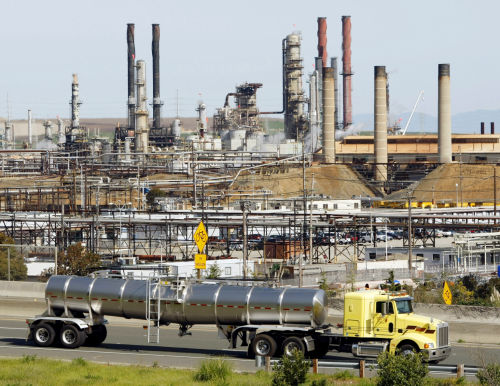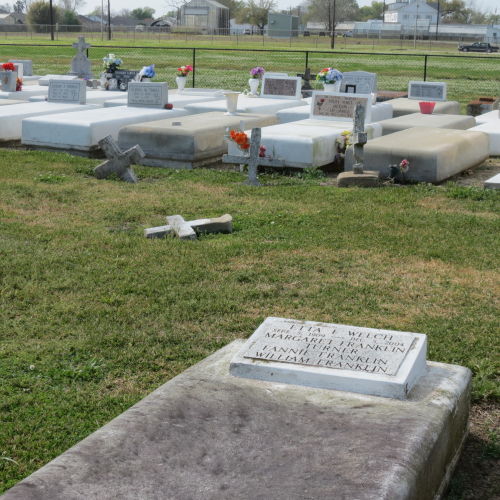
Terrebonne backing away from cemetery business
March 26, 2013
$1.2B central Gulf lease sale was ‘solid’ result
March 26, 2013To drivers of passing cars or casual strollers near the Houma-Terrebonne Civic Center, the humble graveyard with a single tree in the shadow of the parish’s main library building might appear as any other.
But what sets Southdown Cemetery apart from many of the known burying grounds in Terrebonne Parish and surrounding places cannot be determined by a reading of headstones or vaults. Rather, those details reside within the pages of a report prepared a decade ago by a New Orleans archeological firm, Earth Search Inc., whose thermal imaging work determined that as many as 300 burials exist in lands immediately adjacent to the cemetery.
In all likelihood most of the unknowns are slaves, some of whom labored in Houma as early as 1828. There is added potential, based on more recent memory, that some could be wage-workers who were brought on after emancipation, as are many of the dead whose names are inscribed atop graves that are visible today.
The unique character of Southdown and adjoining lands is one reason why emotions are expected to run high when Parish Council members discuss whether Terrebonne should turn over its operation – along with two other cemeteries – to churches, fraternal groups or corporations. Former Council member Alvin Tillman, who works in the life insurance department of the Gertrude Geddes Willis Funeral Home, is keenly aware of what is important about Southdown. Some of his own family is buried there; other loved ones, he said, were buried at a cemetery on the grounds of the former Hollywood Plantation, atop whom a subdivision was built many years ago. Paving over its past, archaeological experts note, is something Louisiana has excelled at over many years, especially when the dead have been people of color.
“The purpose was to give these individuals who worked for nothing or for pennies a day their final right,” said Tillman. “The slave owners and the plantation owners had those cemeteries set aside so that those people could be at peace.”
The enormity of the slave population of Terrebonne can be glimpsed through census figures collected in the years before emancipation.
In 1860 more than 350 slaves were owned by W.J. Minor of Southdown; W.A. Shaffer owned 118. R.R. Barrow, after whom the downtown street is named, owned 400 in that year.
Census figures show that in 1860 the number of slaves was greater than free people white and black, with a total of 6,785 slaves, 5,131 whites and 72 free people of color.
Despite the contributions to the economy of Terrebonne Parish, where sugar was king prior to the development of oil, gas and other industries – and the acknowledgement that for two centuries workers in fields and homes labored under slavery’s yoke, there is no monument, statute, or other standing acknowledgment of their contributions.
Interviews with civic leaders over the past two weeks indicate that there is warmth toward the idea, and there is a clear indication that if such a monument ever were to emerge in Terrebonne Parish, the Southdown Cemetery or the lands adjoining it could be the perfect place.
“As a former council member and an activist in the community, I think it is time,” said Houma Houising Authority Director Wayne Thibodeaux, one of the organizers of Terrebonne’s Juneteenth celebration. “There is a lot of history there. There would be no reason not to consider such a monument given the sacrifices and labor over the years. It should be under serious consideration.”
The Juneteenth celebration relates to the 1865 declaration by federal forces in Texas that slaves were free. Emancipation, despite the 1863 proclamation by President Abraham Lincoln, is not recognized by historians as truly taking effect until 1865. Terrebonne, Lafourche and some other Louisiana parishes were specifically excluded by Lincoln from his document, as they were already under federal occupation.
Council member Arlanda Williams agrees that the time has come for memorializing the work done by so many for so long. Other council members also said the idea has promise.
Hard work and struggle did not end with slavery. Conditions on Louisiana plantations, including many in Terrebonne and Lafourche, did not vary considerably from those of slavery times in the century that followed the war, according to accounts from the workers themselves as well as bodies of work put together by historians. Use of scrip instead of wages in some cases, lack of economic and educational opportunity and other factors kept black laborers chained to plantations long after slavery was but a memory.
“Terrebonne Parish is built on the backs of those people,” said Houma-Terrebonne Historical and Cultural Society Director Rachel Cherry. “When William John Minor was in charge, there was a little blurb in one of the local papers which said they established a slave cemetery at the far east of the property. There was another cemetery called the white cemetery, where Italian laborers were later buried. That is on the grounds of the USDA (experimental sugar cane station). It is more than right or appropriate. I believe it is absolutely necessary. Why would we commemorate parts of our heritage when we need to commemorate all of it? Dedicating that cemetery specifically to that would be the best way to go. In that area is the highest concentration of people who need to be commemorated.”
The grave of Etta Welch, a former Southdown worker whose father was once a slave on that plantation. Many of those buried in marked graves at Southdown Cemetery have ties to the plantation as workers. Some graves have fallen into disrepair and family members say crosses marking some graves, such as those in the background, are disheveled or moved.







